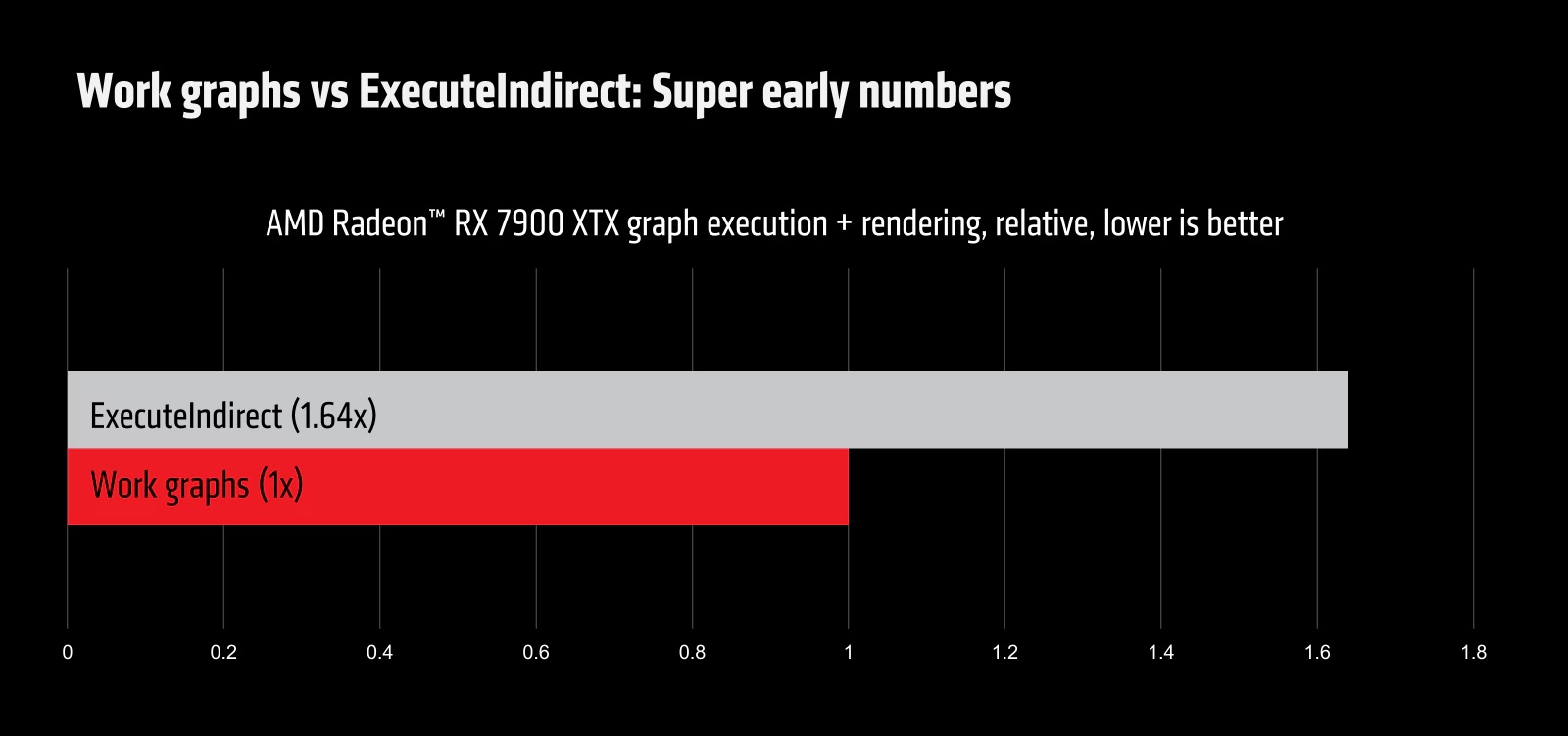Microsoft released a new feature for Direct X 12 that could drastically increase frame rates, and AMD is showcasing that technology on the RX 7900 XT at the Game Developer’s Conference (GDC) this week. For those of us not at the conference, AMD has also released information on the new tech as well as a tech demo on their GPU Open site (via TechRadar).
Direct X 12’s Work Graphs feature aims to reduce CPU bottlenecking on games by offloading some heavy 3D rendering tasks onto the GPU instead. Work Graphs also decreases communication between the processor and graphics card, which helps streamline tasks there as well.
AMD’s tech demo includes work graphs for mesh nodes, which feed directly into mesh shaders. Which removes some of the CPU-GPU communication overhead, resulting in a faster and smoother gaming experience. The more 3D rendering tasks integrated to Work Graphs, the more frame rate gains we can expect to see.
But what does that mean for gamers?

With frame rate increases of up to 64% (via Tom’s Hardware), this technology will do a lot to smooth out the CPU bottlenecking we often see with high-end GPUs running at lower resolutions. Essentially, the CPU is unable to render as fast as the GPU and so you see a sharp frame rate drop-off at 1080p while using a high-powered GPU like the 7900 XT or 4090.
One solution to the CPU bottleneck is to game at higher resolutions like 1440p or 4K. But now we have another with Work Graphs. Of course, as a Direct X 12 technology it won’t help if your PC game is running on another API like Vulcan or Open GL, though the majority of PC games use DX 12 or offer it as an option.
This is also still early days for Work Graphs, and new 3D rendering tasks are being offloaded to the GPU as Microsoft continues working on the technology. And as AMD and Nvidia work on optimizing their GPUs for the tech. Of course, this isn’t a free frame rate boost so there will be a limit to how much rendering Direct X 12 can offload to the GPU, but for now there’s still room to grow.
And of course, the total increase in frame rate will come down to your PC’s specs. That 64% increase in frame rates is based on AMD’s demo PC unit. Your actual FPS gains will depend on your PC configuration so we’ll need more benchmarking to see exactly what kind of performance boost the average gamer is likely to see.







